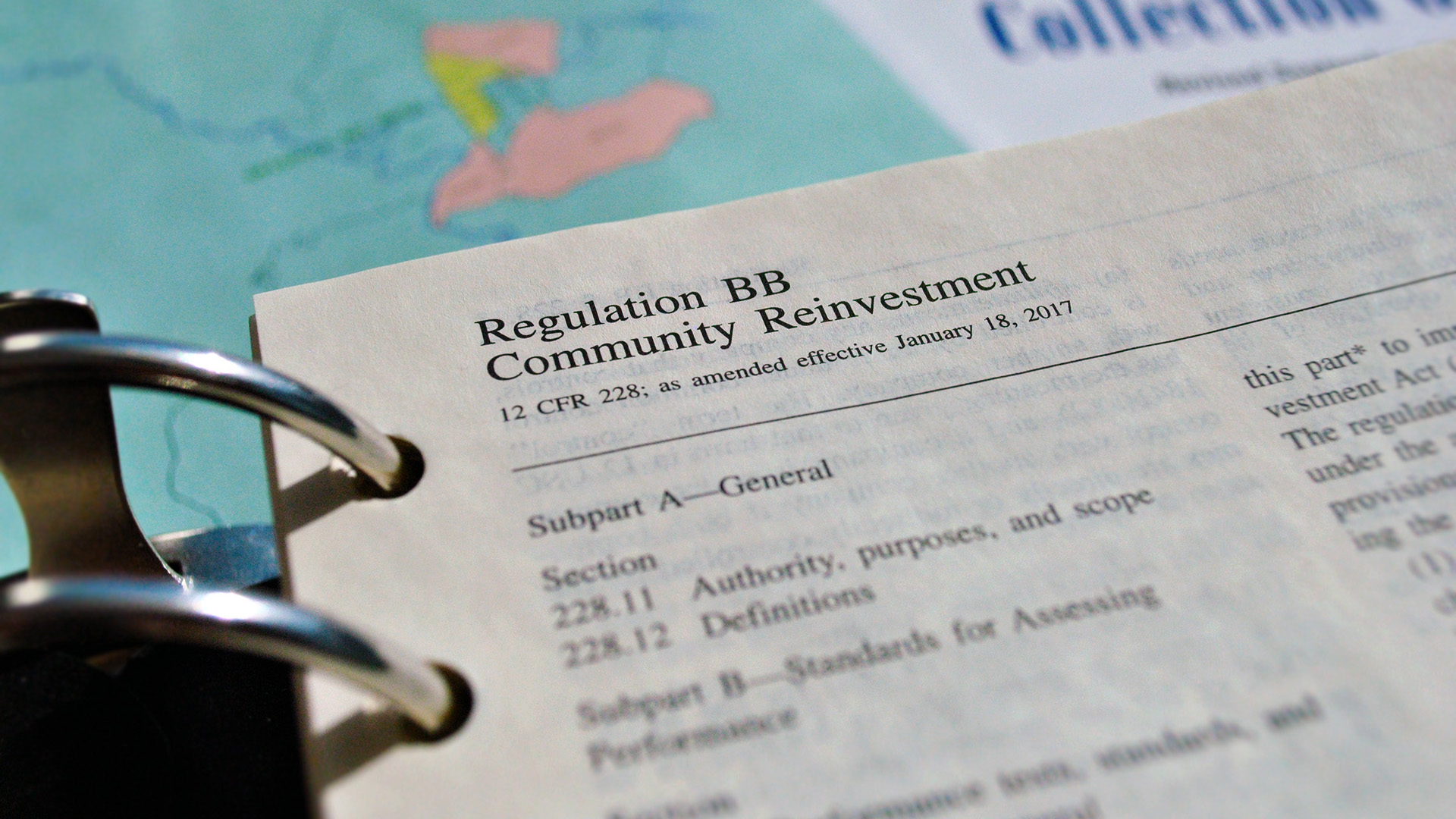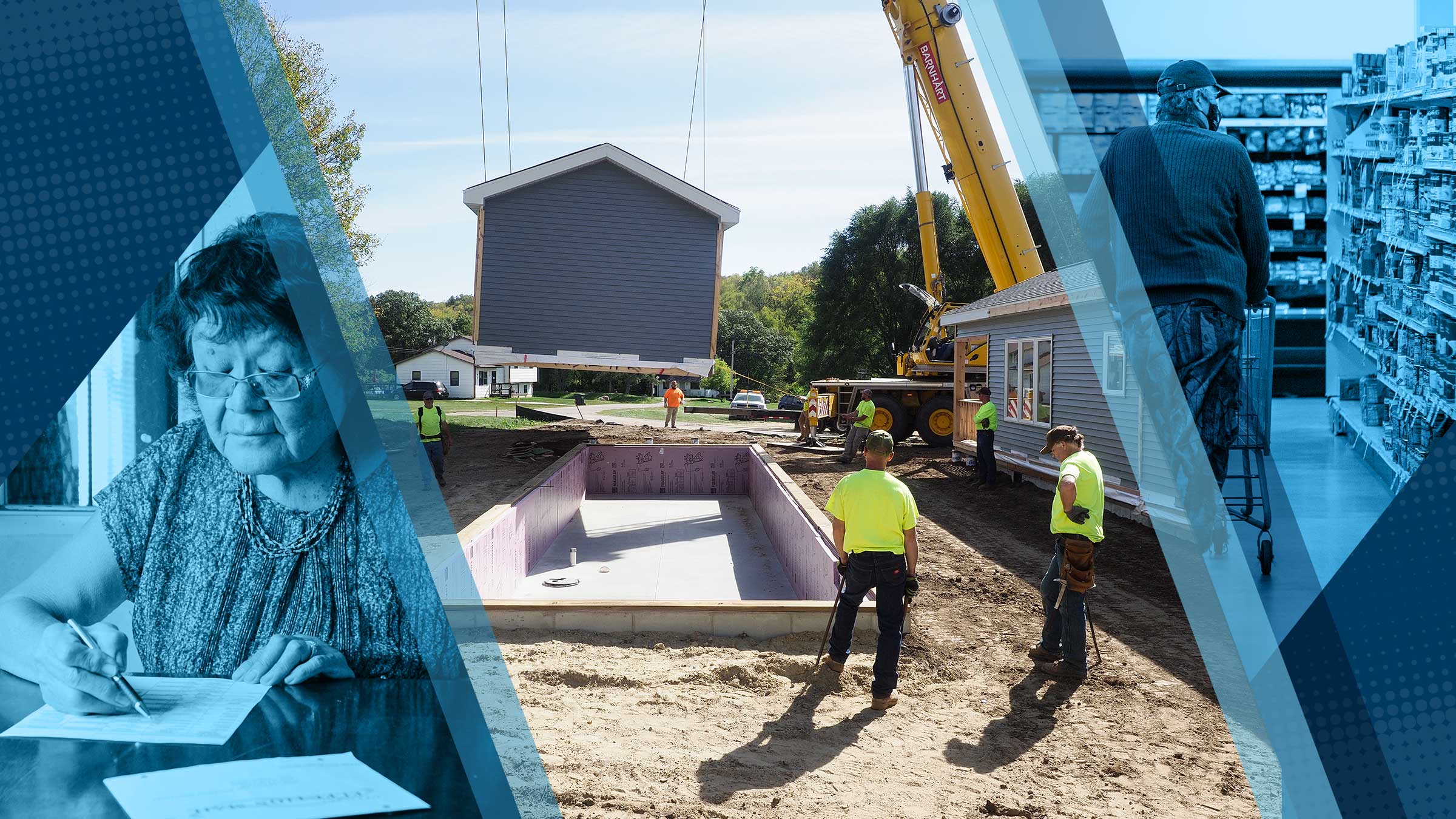The Community Reinvestment Act (CRA) is a federal law enacted in 1977 that is intended to encourage depository institutions to help meet the credit needs of the communities in which they operate, including low- and moderate-income (LMI) neighborhoods,1 consistent with safe and sound banking operations.2 The CRA requires that each insured depository institution’s record in helping meet the credit needs of its entire community be evaluated periodically. That record is taken into account in considering an institution’s application for establishing new deposit facilities, including through mergers and acquisitions.
The performance context analysis, a core part of a CRA evaluation, doesn’t always get the attention it deserves. In this article, we provide an overview of the performance context’s use in the evaluation of a depository institution and discuss the categories of information that bank examiners gather for their analysis. We devote particular attention to qualitative information—gathered through examiners’ conversations with local experts and bank leaders—that adds important nuance to quantitative data and better illuminates a community’s needs. Finally, we highlight initiatives across the Federal Reserve System aimed at adding depth to evaluators’ performance context work.
CRA examination basics
CRA examinations are conducted by the federal agencies that are responsible for supervising depository institutions: the Federal Reserve System, the Federal Deposit Insurance Corporation, and the Office of the Comptroller of the Currency. Depending on the size and scope of the institution, regulators use an array of CRA performance tests and standards to evaluate how well a bank serves its assessment area. CRA examinations are backward-looking, in that they examine the bank’s performance since its last completed evaluation.3
The regulation that implements the CRA is geography-based; that is, it defines specific geographic areas in which activities can qualify for consideration under the CRA. Under the regulation, each covered financial institution is required to delineate its service area, or assessment area, which regulators use to evaluate the institution’s record of helping to meet the credit needs of its community. Assessment areas typically include entire metropolitan regions or one or more contiguous political subdivisions, such as counties, cities, or towns. By law, they cannot arbitrarily exclude low- and moderate-income geographies.
Since economic conditions and community credit needs are not uniform and can vary considerably across assessment areas, examiners need to develop an understanding of assessment area conditions in order to appropriately evaluate a depository institution’s CRA performance. This understanding is established early on in the CRA examination process through the completion of a performance context analysis.4
Performance context, explained
According to the federal banking regulators, “the performance context is a broad range of economic, demographic, and institution- and community-specific information that an examiner reviews to understand the context in which an institution’s record of performance should be evaluated.”5 While the analysis is not intended to be an exhaustive assessment of community credit needs, it is designed to provide a research‐based narrative describing the environment in which the bank conducts its CRA activities—a narrative that examiners can then use to enforce the regulation in a consistent manner across institutions and markets.6
According to the regulation, examiners collect and analyze the following information to provide the “context” for their evaluation:
- Demographic data on median income levels, distribution of household income, nature of housing stock, housing costs, and other relevant data pertaining to a bank’s assessment area(s);
- Any information about lending, investment, and service opportunities in the bank’s assessment area(s) maintained by the bank or obtained from community organizations; state, local, and tribal governments; economic development agencies; or other sources;
- The bank’s product offerings and business strategy as determined from data provided by the bank;
- Institutional capacity and constraints, including the size and financial condition of the bank, the economic climate (national, regional, and local), safety and soundness limitations, and any other factors that significantly affect the bank’s ability to provide lending, investments, or services in its assessment area(s);
- The bank’s past performance and the performance of similarly situated lenders;
- The bank’s public file and any written comments about the bank’s CRA performance submitted to the bank or the Board [of Governors of the Federal Reserve System]; and any other information deemed relevant by the Board.7
Conversations with community contacts
As part of their analysis, examiners also review information provided by community contacts. While the number of community contacts varies depending on the bank’s size (e.g., for a small bank, individuals or groups from one or two organizations are interviewed), these confidential in-person or telephone meetings with members of the public typically occur after an initial analysis of the information mentioned above has been completed.
Examiners select contacts from organizations that can best provide information about the assessment area, particularly its LMI communities, and the performance of the bank being evaluated. Contacts are often leaders of grassroots community organizations (e.g., housing or credit counseling organizations), community-based development or financial intermediaries (e.g., community development corporations), government offices or agencies (e.g., economic development associations), business or labor groups (e.g., chambers of commerce), or civil rights and consumer protection groups (e.g., fair housing organizations).
Examiners ask a variety of questions, which may be specific to the type of organization an interviewee represents. Overall, the questions are designed to stimulate a discussion between the local leader(s) and the examiner about the local context, including the willingness and responsiveness of financial institutions in the assessment area to work with local residents and professionals in meeting community credit needs.8
Since CRA examinations are backward-looking, many of an examiner’s questions are designed to elicit answers that are reflective in nature or seek to measure existing conditions and needs. Interviews also feature questions that ask about challenges, barriers, or opportunities, thus spurring respondents to contemplate what needs to be transformed to improve outcomes for LMI communities and their residents.
Enhancing the analysis
Efforts are currently underway at a number of Federal Reserve Banks to further enrich the performance context analysis. For example, through its Community Development Finance initiative (CoDeFi), the New York Fed pairs its in-house community development experts with its bank examiners to help identify qualified CRA activities that meet the current needs of communities. Staff members who participate in CoDeFi develop independent data-driven analyses on key issues, educate community organizations and residents on how to play an active role in community development finance and the CRA, and encourage collaborations between financial institutions and community-based organizations. A key early step in the initiative is the development of a publicly available resource guidebook that is based on quantitative data, relevant reports and studies, and participants’ enhanced engagement with community contacts.
At the Minneapolis Fed, a similar initiative was piloted earlier this year in Montana, where community development experts and bank examiners conducted extensive outreach in Billings and on the nearby Crow Reservation. The Minneapolis Fed has released an overview of findings from that outreach and is planning a number of follow-up activities, including an Investment Connection event that seeks to match community and economic development organizations with the funding community on selected CRA-eligible project proposals. In the end, efforts like these to improve the CRA performance context analysis will help increase local understanding of community issues, trends, and nuances and address community needs.
Explore more features related to our community engagement trip to Billings:
Early care market may be an economic-mobility barrier in Billings
Where the child care and energy markets meet: A conversation with Dan Carter of ExxonMobil
Endnotes
1 Low income refers to a census tract with a median family income that is less than 50 percent of the area median income. Moderate income refers to a census tract with a median family income that is at least 50 percent and less than 80 percent of the area median income.
2 Regulation BB (Community Reinvestment Act), Code of Federal Regulations, Title 12, §228.11. The text of the regulation is available online at www.ecfr.gov.
3 The period between exams could range from two to five years, depending on the size and scope of the institution.
4 For more on this, see the March 2018 Community Dividend feature, “Defining ‘low- and moderate-income’ and ‘assessment area.’”
5 See Community Reinvestment Act; Interagency Questions and Answers Regarding Community Reinvestment.
6 Laura Choi and William Dowling, Understanding Community Development Needs through the CRA Performance Context, Working Paper 2014-02, Center for Community Development Investments, Federal Reserve Bank of San Francisco.
7 See footnote 2.
8 Applicable community contacts may be interviewed for CRA evaluations of more than one financial institution.
Michael works to advance the economic well-being of Indian Country and low- to moderate-income individuals, households, and communities. He has conducted research and published articles on affordable housing, community development corporations, homeownership disparities, and foreclosure patterns and mitigation efforts.








